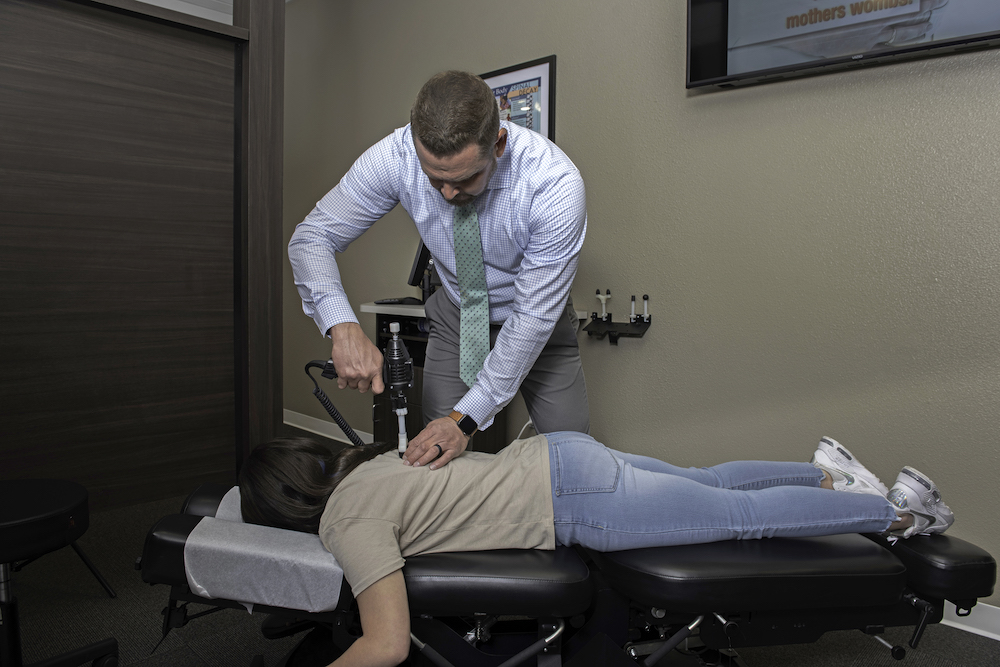What Could Be Causing My Back Pain?
4 min read

The spine is a marvelous and complex structure. However, because it is responsible for supporting the weight of the upper body while enabling us to bend and move, it is also a commonly injured area of the body that can cause a lot of discomfort.
Back pain can affect people of any age, for different reasons. The primary cause of pain can be related to a problem with the back itself or there may be a problem located in another part of the body that needs to be addressed.
Typically there are two categories of back pain:
-
Acute back pain which should only last for a short period of time.
-
Chronic back pain which may be ongoing and long-lasting (usually longer than three to six months), especially if you do not seek medical treatment.
Regardless of the duration, back pain can be uncomfortable and debilitating for many people.
The most common causes of back pain are strain and problems with back structures.
Causes of Acute Back Pain
-
Muscle or ligament strain. Over time, constant strain on your back can cause pain. Movements such as repeated heavy lifting or a sudden awkward movement can strain back muscles and spinal ligaments.
-
Poor posture. Slouching when reading, driving, working, or checking your phone puts excessive pressure on the spine, which can increase your chances of developing back pain.
-
Sleeping position. A poor sleeping position can put unnecessary pressure on your hips, neck and back causing back pain when you wake up.
-
Injury or trauma. Back pain can follow an accident, such as a car accident or falling off a ladder. Pain can also be a result from performing tasks that are out of your natural daily activity or fitness routine, such as weekend gardening or heavy snow shoveling, that require the over extension of muscle groups.
-
Sciatica. Sciatica (lumbar radiculopathy) refers to pain that radiates along the path of the sciatic nerve, which branches from your lower back through your hips and buttocks and down each leg. It’s most commonly caused by another back condition such as a herniated disk in the lower back that irritates the nerve. It can also be caused muscle spasms in the back or buttocks.
Causes of Chronic Back Pain
-
Bulging discs. Discs in your spine act as cushions between the bones (vertebrae). The soft material inside a disc can bulge or rupture and press on a nerve, which can cause pain. There are times, however, when a bulging disc produces no pain at all because it is not pressing on any nearby nerves.
-
Disc herniation. A herniated disc occurs when the soft, gel-like interior of a disc bulges or leaks outward, irritating nearby muscles, joints, or nerve roots. Typically, a herniated disc irritates the sciatic nerve, causing sharp, stabbing pain down the backs of the legs, called sciatica. Sciatica is usually more noticeable than back pain and can also be caused by conditions other than a herniated disc.
-
Arthritis. In some cases, arthritis in the spine (called osteoarthritis) can affect the back. Over time, it can lead to a narrowing of the space around the spinal cord, a condition called spinal stenosis.
-
Osteoporosis. Osteoporosis is a condition in which bones become thin and weak. It occurs when the creation of new bone doesn’t keep up with the removal of old bone. Pain is not a symptom of the condition itself, but rather a symptom of the compression fractures that can develop if your bones become porous and brittle.
-
Skeletal irregularities. Abnormal curves to the spine can also lead to back pain. The three main types of curvature disorders include scoliosis (spine curves to the side), lordosis (exaggerated inward curvature), and kyphosis (excessive outward curvature).
It’s important to seek help from a chiropractor or other health care professional when you have chronic back pain to see what can be done to reduce your pain and improve your quality of life.
Who Is at Risk for Back Pain?
Anyone can experience back pain, even children and teenagers. There are, however, certain factors that can increase your risk:
-
Age. Back pain tends to be more common in individuals age 30 and older.
-
Physical inactivity. Lack of exercise can result in weak muscles, which can cause pain.
-
Excess weight. Being overweight or obese can put extra strain on your back.
-
Improper lifting. Lifting with your back muscles, rather than using the muscles in your legs can cause sudden back pain. Or it can lead to back pain over time if you repeatedly lift objects, such as at work, using more of your back than your leg muscles.
-
Smoking. Nicotine reduces blood flow and inhibits nutrient absorption in the spine.
-
Diseases. Certain medical conditions, such as cancer or arthritis can contribute to back pain.
-
Psychological conditions. Back pain may occur more in people who are prone to feelings of depression and anxiety.
If you are experiencing back pain that doesn’t go away on its own after a few days of rest, request an appointment with our office for an evaluation.





